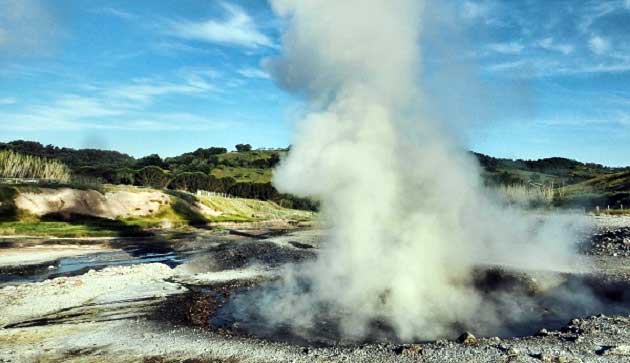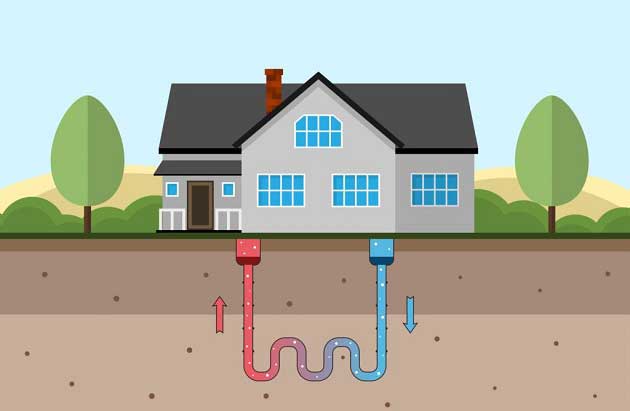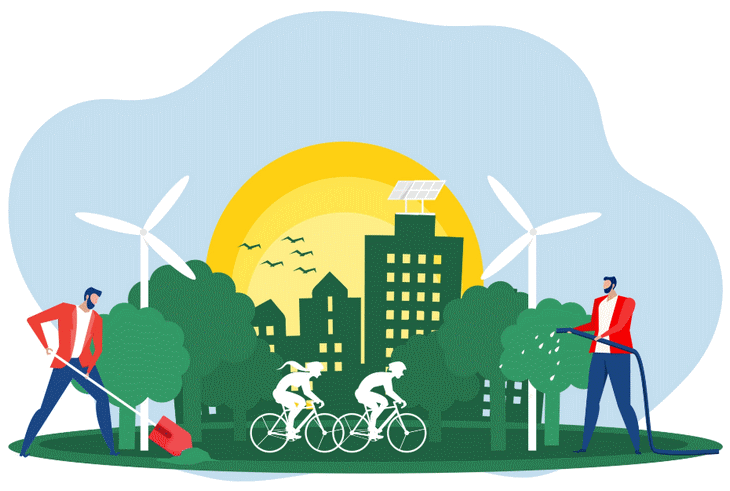March 2024
Geothermal energy, Italy
Italy is home to the oldest geothermal power plant in the world, founded in 1904, and is constantly being expanded. The technology is simple and clean. Hot water is pumped deep into the earth and comes back up as steam, where it drives a steam turbine.
The 34 power plants in the Larderello region of Tuscany produce almost as much electricity as a nuclear power plant, and therefore around 2 percent of Italy's electricity requirements. Geothermal energy is used in 20 countries around the world, and all the power plants worldwide already produce about as much electricity as 13 nuclear power plants.
Why can't we use geothermal energy everywhere?
The deeper you go into the earth, the hotter it gets. But why isn't this heat being tapped everywhere? Expert Philippe Dumas gives us some solid facts.
 Chiusdino Geothermal Plant, Italy
Chiusdino Geothermal Plant, Italy
When you think of geothermal energy in Europe, you immediately think of the hot springs in Iceland. However, Italy actually tops the list of European countries that generate geothermal electricity.
Geothermal energy can be generated anywhere, says Dumas, Secretary General of the European Geothermal Energy Council (EGEC). "There is a constant flow of heat inside the earth."
This heat can be influenced by the environmental conditions on the surface down to a depth of around five meters. However, research by French scientific teams in the 1980s showed that the temperature is constant between five and around 500 meters. "That's a really good principle, everywhere," says Dumas.
The amount of heat available - and therefore its usefulness as a substitute for other energy sources - depends on the location. At this depth, temperatures range from around 5°C in the Nordic countries to 15°C in the Mediterranean countries. If you drill deeper, it gets even hotter: in the high-temperature basins under Tuscany, the temperature reaches 300°C at a depth of 3,000 meters.
Getting warm with geothermal energy
According to Dumas, temperatures of over 110°C would be required to generate geothermal electricity, which could replace conventional power plants. "If the temperature is too low, you can use a heat pump to raise the temperature with great efficiency," he explains.
However, the use of geothermal energy presents some challenges everywhere.
Probably the biggest challenge is space. The most efficient and cheapest way to generate geothermal energy is to use heat pumps, which tap into the constant flow of heat from the earth's core to the surface by drilling into the ground. Larger geothermal heating systems of district heating quality extract the heat from underground water and rock and distribute this energy via a network. A drilling rig is required for both systems.
 Image.. popejoyinc.com
Image.. popejoyinc.com
"When you look out of the window, you see a lot of buildings. In urban areas, there is a limitation: if you have a supermarket, a green space, a play area and a large parking lot, you can't do it," explains Dumas.
Another obstacle to the widespread use of geothermal energy is the investment costs. "Geothermal energy is capital intensive," he explains, and initially requires comparatively more investment than some other energy sources. In the long term, however, the operating costs are zero and geothermal energy is inexpensive, he adds.
A third problem is simply public awareness. Several major European cities use geothermal energy on a large scale, but this is not widely known. "In Paris, nobody knows that one million inhabitants heat with geothermal energy," says Dumas. "Nobody knows because it's underground, so you can't see it." In Europe, there are already many well-known buildings that are heated with geothermal energy, such as the NATO headquarters and the European Parliament.
Geothermal energy should not be a gamble
Dumas coordinated the EU-funded GEORISK project, which aimed to identify and reduce the risks associated with new geothermal projects in order to stimulate private investment in the industry. GEORISK was a large-scale collaboration between key stakeholders in the geothermal industry across Europe.
The team developed a new tool to categorize the risks of planned projects, including external hazards from natural or man-made factors, risks due to underground uncertainties and potential technical problems.
The project helped several European countries to develop financial risk mitigation frameworks for geothermal projects, as required by the new EU Directive on the promotion of the use of energy from renewable sources.
There is currently a large transfer of expertise and manpower from the oil and gas industry to geothermal energy, as many of the technologies used are similar, which could help this clean energy source become standard knowledge - and standard use.
Reference(s) .. cordis.europa.eu
